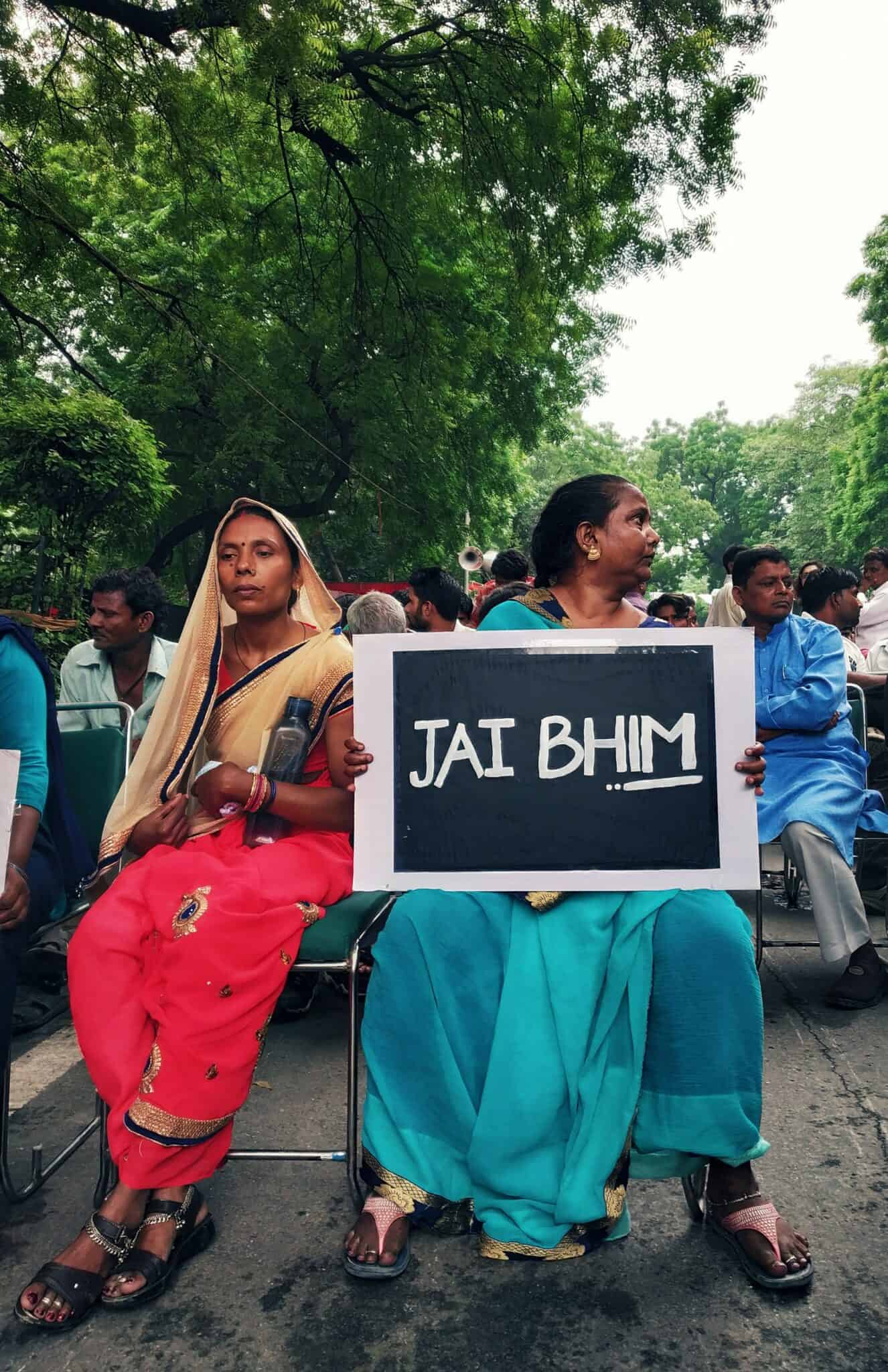Priya Kamath is a student at Harvard Law School.
This post is the second of a two-part series that addresses caste discrimination in American workplaces. Part I discussed the history of the Indian caste system and how caste discrimination may surface in American workplaces. Part II, below, describes where caste may fit in existing U.S. anti-discrimination doctrine, proposals for reform, and recent developments.
Caste Discrimination as a Legal Claim
Enduring a hostile work environment is, by itself, insufficient grounds for a legal claim. Instead, an employee must show that the harassment they face at work is based on their membership in a protected class. So employees alleging caste discrimination like John Doe — whose lawsuit against Cisco is discussed in Part I — must argue that caste falls within at least one protected class.
Caste and Current Anti-Discrimination Law
Federal law doesn’t explicitly outlaw caste discrimination. However, judicial precedent regarding Title VII and Section 1981 arguably prohibits caste-based workplace discrimination. The International Convention on the Elimination of All Forms of Racial Discrimination treaty (CERD) is another pertinent legal authority. Each is considered below.
Title VII
Bostock v. Clayton County makes clear that the test for applying Title VII is whether a protected class is a “but-for” cause of discrimination. As Justice Gorsuch quipped in Bostock, there is “[no] such thing as a ‘canon of donut holes,’ in which Congress’s failure to speak directly to a specific case that falls within a more general statutory rule creates a tacit exception.” Doe argued in Cisco that casteism is a form of discrimination based on race, color, national original, and religion, all classes enumerated in Title VII. Therefore, but for Doe’s national origin — or race or color or religion — Doe wouldn’t have faced discrimination.
The Supreme Court ruled that “national origin” is synonymous with “ancestry” for purposes of Title VII, making national origin a particularly apt categorization of caste. Caste is inherited and immutable, making it fundamentally ancestral. Ancestry is so integral to caste that some scholars hypothesize Hinduism ceased being a missionary religion when the caste system formed. In other words, there would be no basis from which to assign converts to a caste without lineage.
The EEOC’s enforcement guidance on national origin discrimination is granted deference by courts and promotes a broad understanding of the term. Many of the examples of national origin discrimination listed by the EEOC overlap with the markers of caste mentioned in Part I. For example, the Commission prohibits discrimination based on an individual’s last name, the most common indicator of caste. Discrimination based on physical and cultural characteristics is also prohibited, corresponding with the caste markers of skin color and dietary preferences respectively. The EEOC similarly defines racial discrimination as actionable under Title VII when based on ancestry or physical and cultural characteristics associated with a certain race. A Harvard Law Review Forum essay further examines casteism as a Title VII claim based on race, color, religion, and mixed motives.
Dominant-caste Indians face discrimination themselves as immigrants and/or people of color, but this doesn’t negate the possibility that they perpetuate caste oppression. Importantly, the Court affirmed that discrimination remains actionable under Title VII when it emanates from someone possessing the same protected characteristic as the aggrieved employee. Thus, having caste-discrimination lawsuits between two or more parties of Indian descent is acceptable.
42 U.S.C. § 1981
Caste discrimination should also be actionable as racial discrimination under Section 1981. The Supreme Court has understood “race” capaciously for the purpose of Section 1981, having unanimously affirmed that discrimination based on Arab descent and Jewish faith are each considered racial discrimination under the statute. In the former opinion, Saint Francis College v. Al-Khazraji, the Court clarified that Section 1981 protection is afforded to a plaintiff “subjected to intentional discrimination solely because of their ancestry or ethnic characteristics.” As discussed, caste is an ancestral institution.
International Convention on the Elimination of All Forms of Racial Discrimination
The CERD treaty was ratified by the United States in 1994. The CERD defines racial discrimination as including “any distinction, exclusion, restriction, or preference . . . based on descent.” In 2002, the CERD Enforcement Committee “strongly reaffirm[ed] that discrimination based on ‘descent’ includes discrimination against members of communities based on . . . caste and analogous systems of inherited status . . . .” The CERD remains one of the few formal acknowledgments of caste discrimination by the U.S. government.
Proposed Amendments and Legislation
Title VII and Section 1981 may serve as legal footholds for oppressed-caste workers, but amendments to antidiscrimination statutes and policies explicitly protecting caste are sorely needed. As discussed in Part I, oppressed-caste workers alleging caste discrimination are largely temporary visa holders who depend on their employer to legally remain in the United States. Fear that filing a grievance with HR may impact their employer’s goodwill is not unfounded, if EEOC actions are any indication. In FY 2020, Title VII retaliation claims accounted for 41.5% of all complaints filed with the Commission. Equipped with the explicit assurance of a legally redressable claim, vulnerable employees experiencing caste discrimination may be emboldened to assert their rights. The EEOC should aid in this effort by clearly listing caste in its enforcement guidelines.
Amendments would have the added benefit of combatting ignorance and illiteracy surrounding caste. Specifically, employers would be legally obligated to take seriously allegations of caste discrimination. Such an obligation may encourage employers to better educate themselves on caste, including the ways casteism may manifest through coded language and behavior. For example, the pernicious significance of Doe’s dominant-caste supervisor telling colleagues that Doe was not on his college’s “main list” was likely lost on Cisco’s HR department. But to those familiar with the caste system, the phrase conveyed that Doe gained college admission through India’s contentious affirmative action program and is oppressed caste.
Because caste is typically deduced by last name, a glance at a job applicant’s resume can be enough to trigger discrimination. At present, the vast majority of Indian immigrants in the U.S. are dominant caste. This alone exacerbates the power imbalance inherent in hiring processes. Networks of oppressed-caste workers have dubbed Silicon Valley “Agraharam Valley,” in reference to the neighborhoods within Indian villages that are exclusively occupied by Brahmin residents. For these reasons, additional legislative safeguards are needed to curb caste discrimination before a formal employment relationship forms. One possibility is a statute like the Americans with Disabilities Act to discourage an employer from asking questions likely to reveal an interviewee’s caste. At least one Title VII lawsuit has been filed in relation to an employer questioning an Indian applicant about caste.
Recent Developments
A growing number of universities are leading the charge to root out caste discrimination by adding caste as a protected class in campus anti-discrimination policies. Harvard followed suit in November 2021 by ratifying a contract with the Harvard Graduate Student Union that includes a provision explicitly protecting student workers from caste discrimination. As Aparna Gopalan, a former member of the HGSU Bargaining Committee, explained, the consequences of Harvard’s actions will be felt nationally: “when employees raise the issue of such discrimination in their workplaces, they will be able to show that one of the finest institutes in their country also recognizes caste as an issue and has [a] provision against such discrimination.” Such amendments are a step towards giving antidiscrimination measures teeth and fulfilling the promise of antidiscrimination law: creating just workplaces.










Daily News & Commentary
Start your day with our roundup of the latest labor developments. See all
December 12
OH vetoes bill weakening child labor protections; UT repeals public-sector bargaining ban; SCOTUS takes up case on post-arbitration award jurisdiction
December 11
House forces a vote on the “Protect America’s Workforce Act;” arguments on Trump’s executive order nullifying collective bargaining rights; and Penn State file a petition to form a union.
December 8
Private payrolls fall; NYC Council overrides mayoral veto on pay data; workers sue Starbucks.
December 7
Philadelphia transit workers indicate that a strike is imminent; a federal judge temporarily blocks State Department layoffs; and Virginia lawmakers consider legislation to repeal the state’s “right to work” law.
December 5
Netflix set to acquire Warner Bros., Gen Z men are the most pro-union generation in history, and lawmakers introduce the “No Robot Bosses Act.”
December 4
Unionized journalists win arbitration concerning AI, Starbucks challenges two NLRB rulings in the Fifth Circuit, and Philadelphia transit workers resume contract negotiations.